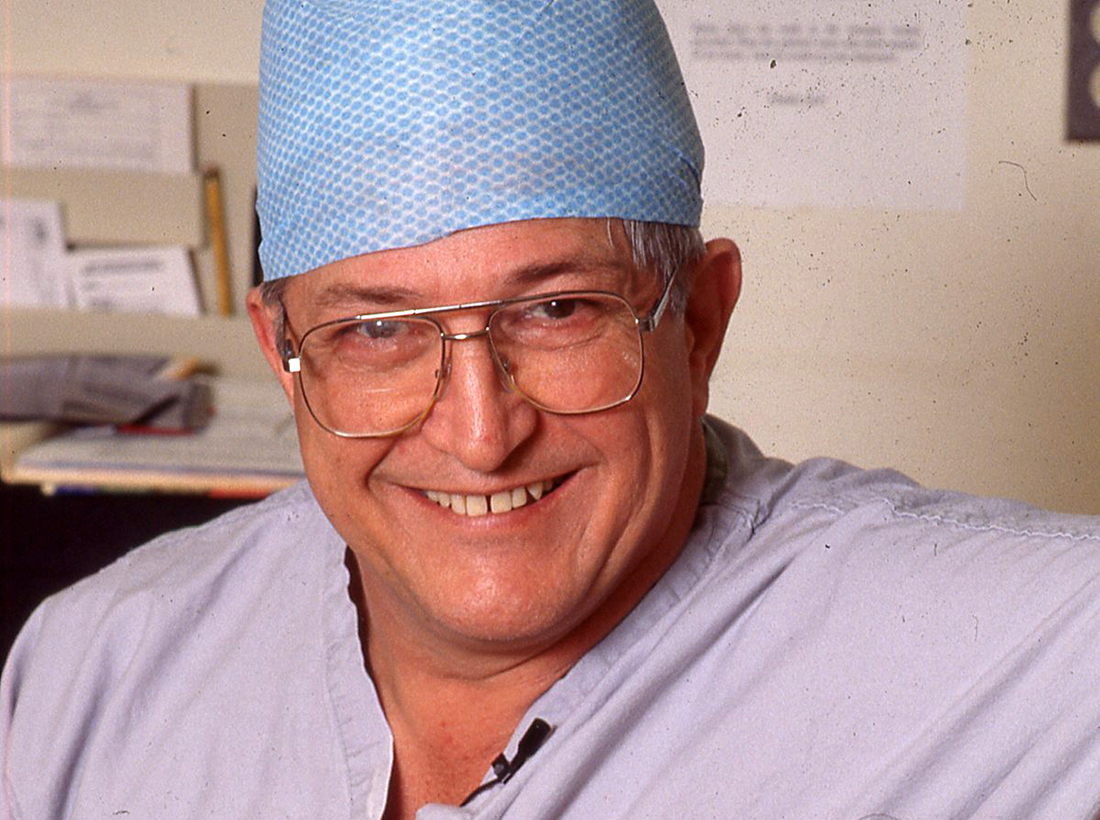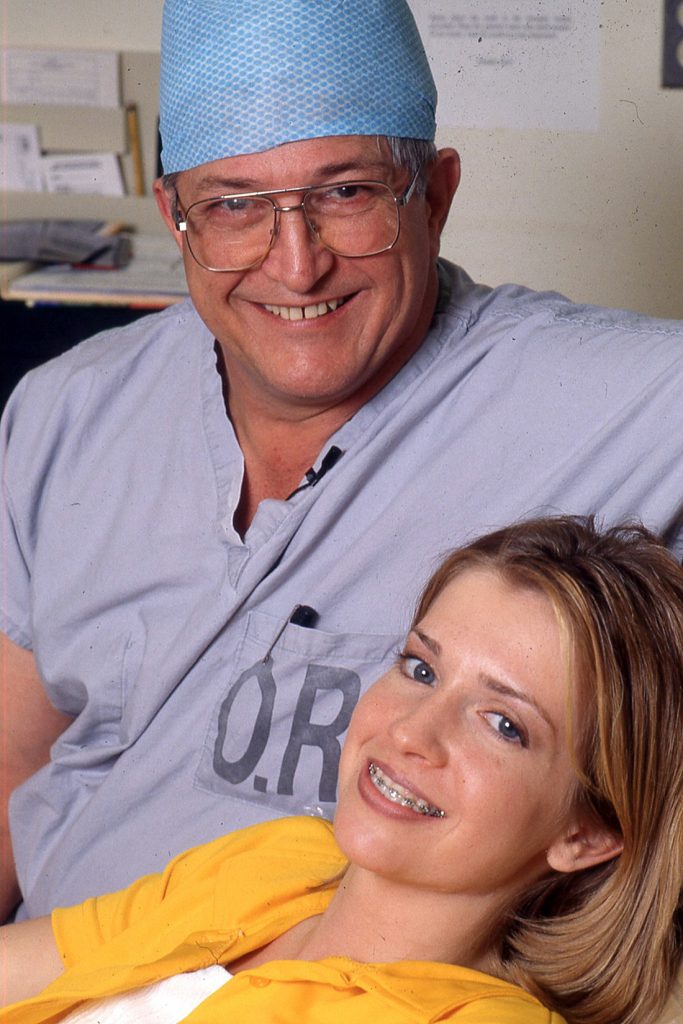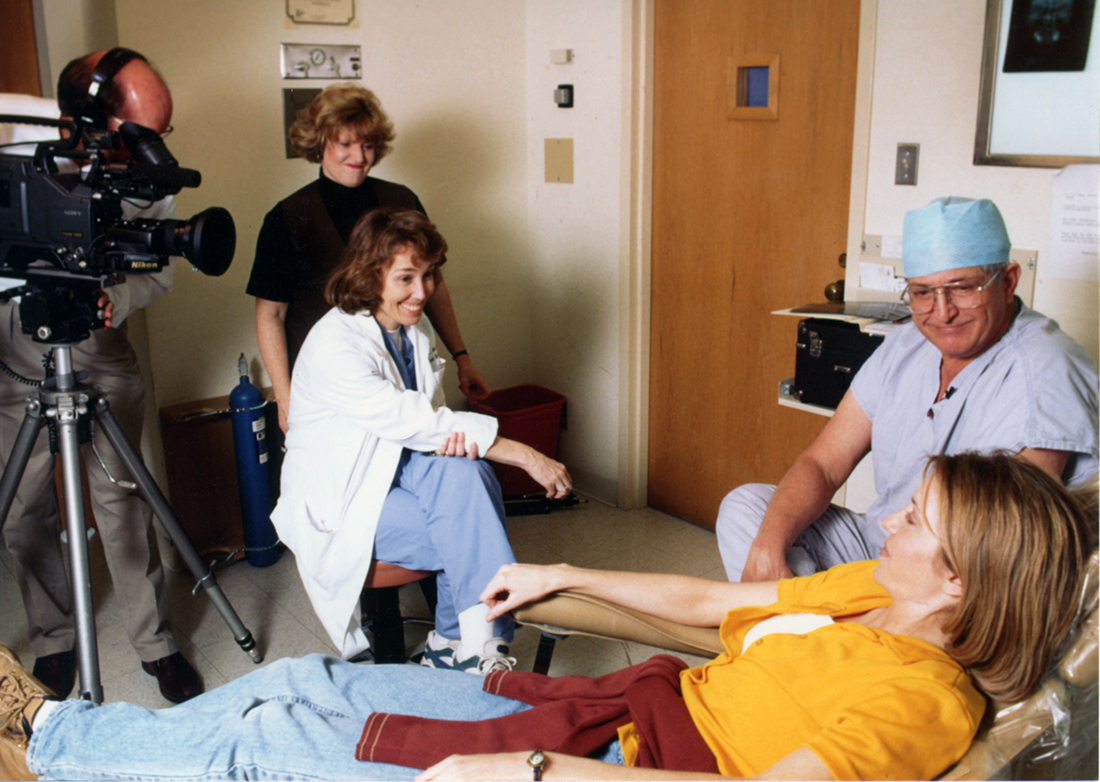Smiles we remember

If there is one thing in common among all three decades’ worth of residents who studied under Dr. Sterling “Bob” Schow, it’s consistency.
“Out of the 30 years of people he trained, I could walk into an OR with anyone with his tutelage, and we could do a surgery in exactly the same way without skipping a beat,” says Dr. Campbell Bourland ’06, ’11. They didn’t get to that level of precision and predictability through hand skills or innate talent alone, but through the outspoken, hard-as-nails persona that is Schow’s hallmark.
“Dr. Schow was like a tough coach or teacher. He was hard on us at times but only because he wanted to get the best out of us,” continues Bourland, a clinical adjunct faculty member in oral and maxillofacial surgery. “He knew he had a finite window of time to work with us to help us realize our potential. I have talked to that man every week for the past decade of my life, and it’s hard to believe he’s gone. I will miss him greatly.”
Reflections such as this one were common on May 21, when friends, family and members of the Texas A&M University Baylor College of Dentistry community gathered to say their goodbyes to this stalwart champion of oral and maxillofacial surgery. Schow, a professor whose career at TAMBCD began late in the summer of 1986, passed away May 14.

Among those in attendance at his memorial service were a number of Schow’s former residents. Dr. David Grogan, associate professor and chair of oral and maxillofacial surgery, sums up his take on Schow’s typical teacher-student relationship.
“He left his own mark on all of his residents. He had an uncanny ability to assess a resident as it relates to their surgical abilities and professional development,” Grogan says. “As times and residents changed, Bob budged very little from his standards regarding resident education, and amazingly, the residents respected and loved the man.”
If Schow’s standards were not met, well, one could expect what Grogan describes as a “closed-door” session. While such a notion could inspire trepidation, the residents “loved him for his dedication and relentless interest in their education,” Grogan adds.
And he never let go of those high standards, not even for himself. During a 2011 service awards interview, Schow had a characteristic response when asked about his job responsibilities: “The need to continue learning.” Even succinct statements were not without impact.

Schow’s tenure at TAMBCD began as the oral and maxillofacial surgery residency program director, a role he assumed following his 1986 retirement from the Army with the rank of colonel. He served the department as residency program director for more than 20 years, and then as professor, during which time he offered expertise as a consultant for the Commission on Dental Accreditation of the American Dental Association and as an examiner for the American Board of Oral and Maxillofacial Surgery.